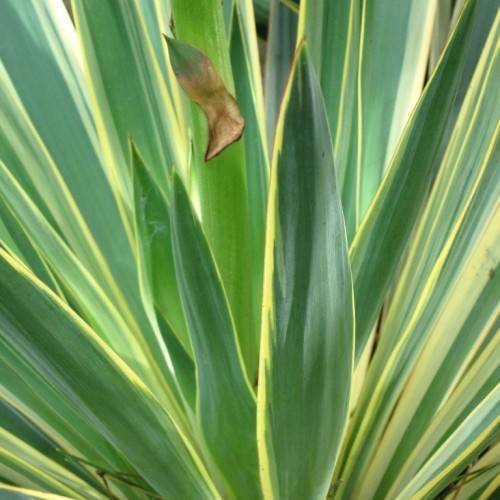
Spanish dagger
Yucca gloriosa 'Variegata'
Cycle:
Perennial
Watering:
Minimum
Hardiness Zone:
6 - 10
Flowers:
Flowers
Sun:
Full sun
Leaf:
Yes
Growth Rate:
Low
Maintenance:
Low
Drought Tolerant:
Yes
Salt Tolerant:
Yes
Thorny:
Yes
watering
This drought-tolerant plant should be watered about once a week during the spring and summer months; in cooler climates, water even less frequently. Water deeply and allow the top couple inches of soil to dry out before watering again. In order to prevent root rot, be sure to avoid overwatering and never leave the plant sitting in water for extended periods of time. If the plant is in a container, you may need to water more often. During the winter months, only water about once every 2 weeks.
sunlight
Spanish Dagger plants (Yucca gloriosa 'Variegata') prefer bright, direct sunlight for the majority of the day. They do best in full sun, at least 6-8 hours per day, and can even tolerate sunny, arid conditions. When planted in partial shade, the plants may stay healthy but may not produce a strong flower show due to lack of sunlight. For best flower production, give your Spanish Dagger plant bright, direct sunlight in the early morning followed by slightly dappled shade in the afternoon.
pruning
Spanish Dagger plants should be pruned twice a year - once in late winter and again in early summer. The winter pruning should be done between late February and early March, when new growth begins to form. This involves cutting off any dead, diseased, or damaged stems and shoots that won’t be contributing to the overall health and structure of the plant. At this time, you can also trim any stems or shoots that are too long and ruining the harmony of the plant. In the summertime, the plant should be pruned again in late June or early July before the flowering season begins. During this pruning, cut away any dead, dying, or problem stems, shoots, and flowers, as well as any that are too long or out of balance with its structure. It’s also a good idea to remove any seed heads that form on the blooms as well, as this helps to keep the plant flowering for longer.
